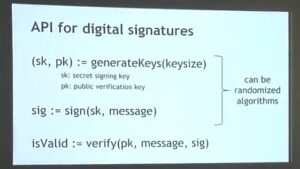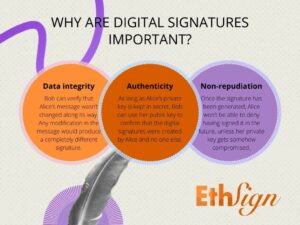By Ayomide Ogunsakin.
Cryptocurrencies (e.g., Bitcoin and Ethereum) are defined as innovative digital currencies backed by cryptography to secure and govern the transactions and supply of digital coins in circulation.
Contemporary cryptocurrencies lack legal, monetary, and institutional backing that traditional financial services employ. Instead, cryptocurrencies provide trust through technology. They depend on the Blockchain Technology which involves a distributed and consensus-based database with a high cryptography and transparency, that enables the use of a distributed, self-regulating and immutable ledger to make all transactions tamperproof – thus eliminating the requirement of a trusted third party. So ideally, the Blockchain system uses “trustlessness” to create Trust.

However ironic it may sound, the system is built to work that way; to be self-regulating and executory. There have been a plethora of research into the underlying attributes of the technologies that drive trust in cryptocurrencies, and relying on a couple of these research works, this article would attempt to examine one of the major ways through which Trust is achieved on these Blockchains; Digital Signing/Signatures.

It must first be established that Trust is a very crucial aspect in all financial transactions and payments, because Individuals and organizations need to be assured that the transactions they make are processed and completed in a fair and safe manner by the intermediaries involved like Banks and Central Banks.
Seeing as Cryptocurrency trading and investments have been on the rise in the past couple of years, it is equally as important that there is a proper sense of trust in the system that processes these Crypto transactions and investments.
As it stands today, Cryptocurrencies have no central authority. In fact, one of their major selling points is that they are typically immune to government interference and manipulation. This, in addition to their digital nature also makes it easy for them to be transacted online and transferred across international borders. These key features show the difference between Crypto and fiat currencies.
Furthermore, Crypto transactions do have some shortcomings. The fact that they lack legal or institutional backing makes them unpredictable, volatile, and risky. Owning a Crypto wallet or account also doesn’t require name or national identification. Crypto users are therefore anonymous, only identifiable by their public key address which is usually a 32-bit string with a combination of characters and numbers. The combination of these two factors makes cryptocurrencies an easy to for money laundering, tax evasion, and illegal trade in drugs and weapons.
It is therefore very important for there to be some measure that atleast, shows proof and authorization of transactions made on the Blockchain.
Diving right into the major focus of this article which looks into Digital Signing as one of the means of ensuring Trust in Crypto, it must also be stated that Blockchains operate through node-like computers that check the viability of all blockchain transactions, ensure that cryptos are not double-spent and only legitimise transactions once they have been checked against the existing ledger. Digital signing is a major method of legitimising these transactions.
In simple terms, Digital signatures are basically the electronic form of the traditional pen on paper signatures. Thus, like normal signatures, Digital Signatures have two major uses. First, to ensure that each person’s ‘signature’ is unique to them with a validity verifiable by others. Secondly, for signatures to be tied to particular documents which have been endorsed and agreed to, so that such signatures can’t just be stolen or forged by another person on other documents.
How then is this replicated in cryptography? Through APIs.

An API (Application Programming Interface) is a software intermediary that essentially allows applications communicate with each other. For the purpose of digital signatures, there are three operations that must take place via APIs: generation of Keys and the division of those keys into (sk) and (pk) as seen above; the sign operation which involves adding the message/ document you want to put your signature on; and then the Verify Operation which takes the object that claims to be a valid signature, and verifies it.
In essence, this whole process which involves cryptographic systems like hash functions, public keys and encryption techniques, allows the blockchain to confirm that whoever initiates any transaction, is in fact, authorized to do so; showing proof that something came from you and not someone else.
Digital signatures can even be said to be a safer option than physical signatures because the latter category may be more prone to forgery since a party can actually see another party’s signature appended on other documents and try to copy it or in some cases, force the party into signing shady documents under duress.

A major Innovative platform that has saddled itself with the task of birthing this utility and adding a legal backing to digital signatures in the Blockchain space, is “EthSign”, an Ethereum-based decentralised e-signature platform. It is the first major Web3 Technology to develop an electronic agreements signing and execution product.
It operates on a website with a very straightforward and easy to navigate UI (Usee Interface) that allows Crypto users connect their wallets or sign in with Google account details, to sign agreements. As part of it’s features, the platform also enables Smart-escrow contracts seamlessly react to on/off-chain information from external APIs and execute agreement terms.
Finally, the extra flavour that EthSign adds to digital signing, is the ability to create “legally binding” PDF contracts that go hand in hand with code-based transactions for trustless execution.


Clearly, this development is very much of significant interest to Lawyers and Legal parties, because it points to how rapidly several areas are getting decentralised and evolving into Web3 and how important it is to be properly equipped with enough knowledge in this regard, because the Legal space would not be exempt from the technological changes and developments that have already started and would occur in the nearest future.
Dear readers, we really need your support to keep on serving you with authoritative, truthful, and juicy stories everyday. For your support, please reach out to the editor @gavelinternational66@gmail.com

